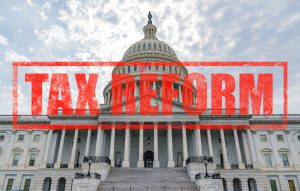New tax rules that apply to law firms are complicated

KRS partner Jerry Shanker and I discussed the impact of the Tax Cuts and Jobs Act on law firms at a Breakfast with Lakeland Bank on June 12.
From working with our law firm clients and associates, we realized that many firms are still scrambling to come to grips with the tax code changes and develop tax planning strategies around them. The attendees at our Lakeland Bank talk had similar concerns.
While many businesses stand to benefit from the tax code overhaul, when it comes to the Act’s impact on law firms and their partners and associates – it can get complicated.
These key provisions of the Act affect law firms and their members:
- Reduction in individual and corporate income tax rates
- $10,000 annual limit on deduction of state and local income taxes (SALT). This includes deduction for real estate taxes
- No deduction for miscellaneous itemized deductions Increased standard deductions
- Introduction of new Code Section 199A, which provides for a tax deduction of 20% of qualified business income, subject to limitations and exclusions
Free Guide for Law Firms
We’ve summarized several other key changes in the tax code that impact law firms in a downloadable guide, “The Tax Cuts and Jobs Act of 2017 – Considerations for Law Firms.”

If you are a managing partner or executive at your law firm, understanding the factors covered in the Guide will help you and your firm determine the best strategy for optimizing your firm’s and your partners’ tax positions. By downloading this guide, you will learn:
- How the choice of business entity – C-Corp, S-Corp, or pass-throughs – is impacted by the updated code
- New rules for specified service businesses
- Changes that impact entertainment and fringe benefit expenses
- Code Section 179 changes that impact expense deductions
- New limitations on business interest and excess business loss
- Key changes to Section 199A deductions that impact individual W-2 wage earners.
We’ve got your back
At KRS, we’re working to help our clients understand and navigate the new tax law changes – and those affecting law firms are particularly complicated. Because each law firm’s and individuals’ taxable income and deductions are unique, each individual set of facts and circumstances must be reviewed. We’re happy to help you with yours. Contact me at mrollins@krscpas.com or 201.655.7411 for an initial consultation.

 The Internal Revenue Service is urging taxpayers to do a “paycheck checkup.”
The Internal Revenue Service is urging taxpayers to do a “paycheck checkup.”
 The Tax Cut and Jobs Act (TCJA) was signed into law on December 22, 2017, and took effect on January 1, 2018. Included in the political promise of tax simplicity and historically large tax cuts to middle-income households were amendments to existing tax code, including
The Tax Cut and Jobs Act (TCJA) was signed into law on December 22, 2017, and took effect on January 1, 2018. Included in the political promise of tax simplicity and historically large tax cuts to middle-income households were amendments to existing tax code, including